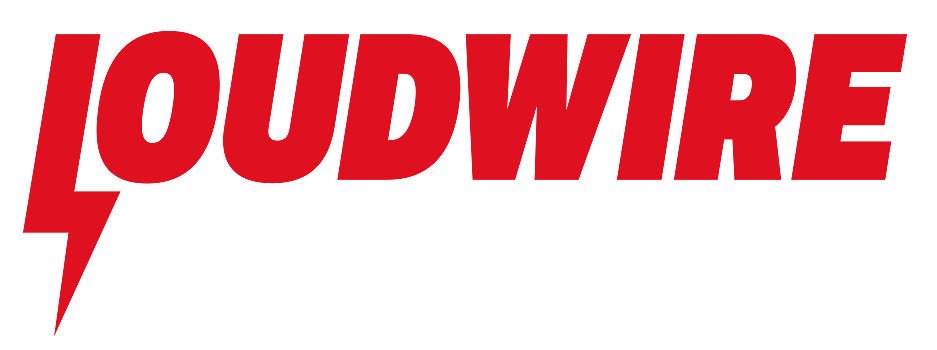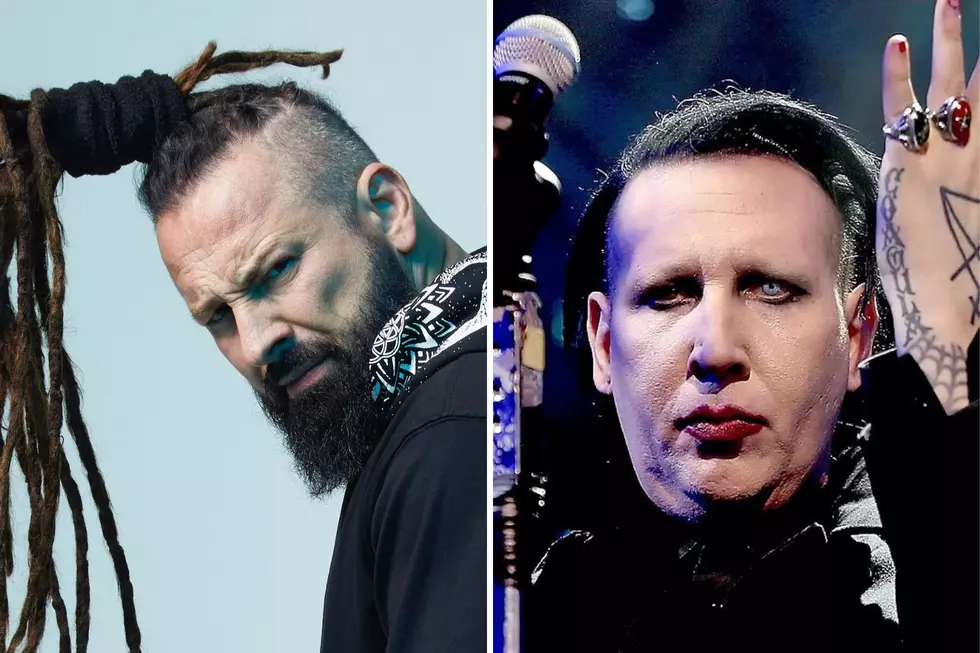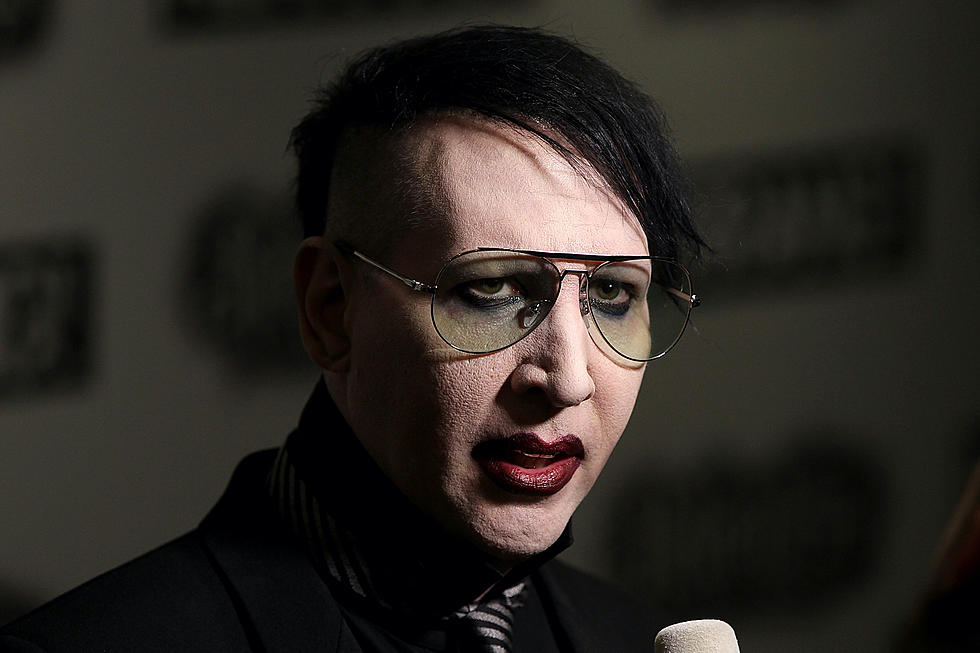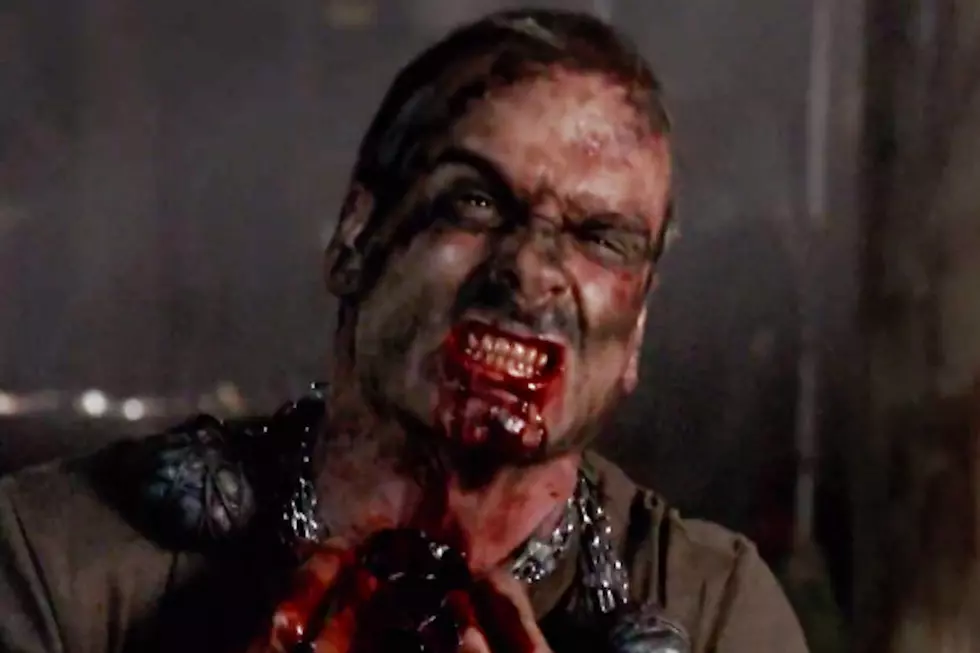With his paradoxically offensive and infectious brand of post-industrial heavy rock, Marilyn Manson reinvented shock rock for the benefit of Generation X and, as a result, simultaneously became one of the most successful and reviled musical artists of the 20th century’s final decade. Born in Canton, Ohio, as Brian Hugh Warner, on January 5, 1969, the man who would become Marilyn Manson relocated to Florida after high school and was studying journalism when he founded his eponymous band in 1989. With the help of guitarist Scott Mitchell — soon reborn as Daisy Berkowitz — and other local musicians willing to combine the names of celebrity divas with those of serial killers (e.g. keyboardist Madonna Wayne Gacey and, later, bassist Twiggy Ramirez), Marilyn Manson and the Spooky Kids, as the group was first known, spent the next few years honing its provocative music, scandalous image and theatrical stage act — finally earning the patronage of Nine Inch Nails leader Trent Reznor, who signed them to his Nothing Records imprint. Reznor would go on to produce Marilyn Manson’s first three, breakthrough releases, ‘Portrait of an American Family’ (1994), the ‘Smells Like Children’ EP (1995), and ‘Antichrist Superstar’ (1996), before the pair experienced a bitter falling out. But by then, Marilyn Manson — both band and its titular frontman — had become a household name for smitten young fans and their outraged parents to bicker about at dinner time. Despite Reznor’s conspicuous absence, 1998’s ‘Mechanical Animals’ was another chart smash and Marilyn Manson took their ritualistic concerts to new heights over the ensuing year. Until the Columbine shooting tragedy of April 1999 saw Manson rather unfairly scapegoated as a symbol of pop culture violence and decadence, forced the cancellation of a tour. Shaken but unbowed, the band simply channeled this unwanted attention into their next LP, ‘Holy Wood (In the Shadow of the Valley of Death),’ and its leader grew even bolder with his multi-media ambitions for 2003’s ‘The Golden Age of Grotesque,’ which was tied to his first fine arts show. What’s more, like his fundamental creative role model, Alice Cooper, Marilyn Manson, the man, had by this point become bigger than Marilyn Manson, the band, and after announcing then renouncing his retirement from music, he has carried on recording and touring sporadically in a variety of guises. Backing musicians and musical influences may evolve and change now and then, but Marilyn Manson’s iconic persona now overshadows all else.
In 2021, actress Evan Rachel Wood, who had previously testified about being in an abusive relationship in her past, went on record that her abuser was Brian Warner, better known in the music world as Marilyn Manson. Since then, multiple other women have also come forward with allegations. Manson has been dropped by his record label, agency, longtime manager and has had upcoming television roles canceled.
Note: This historical summation of Marilyn Manson's career was written long before widespread allegations of abuse were made against him. While his influence on rock music is undeniable, this fact is not meant to overshadow or trivialize the myriad abuse allegations levied against him.
Marilyn Manson
- Selected Discography: ‘Portrait of an American Family’ (1994), ‘Antichrist Superstar’ (1996), ‘Mechanical Animals’ (1998)
- Related Artists: Nine Inch Nails, Alice Cooper, Rob Zombie










